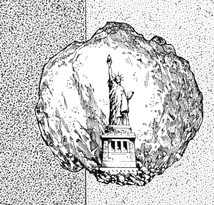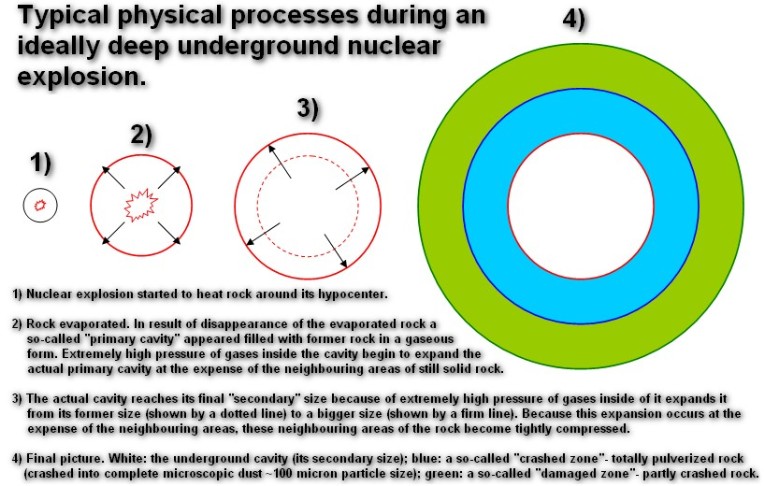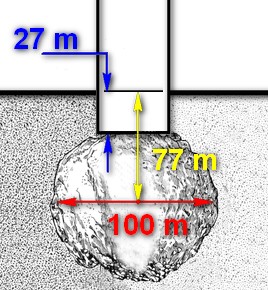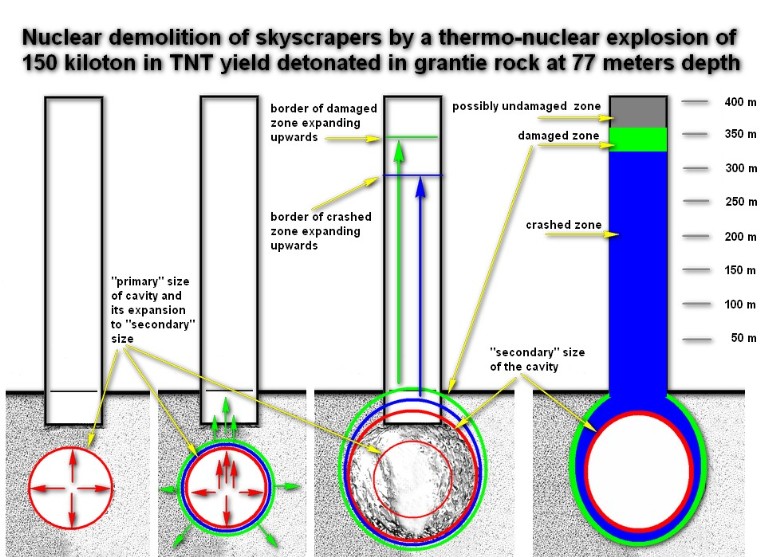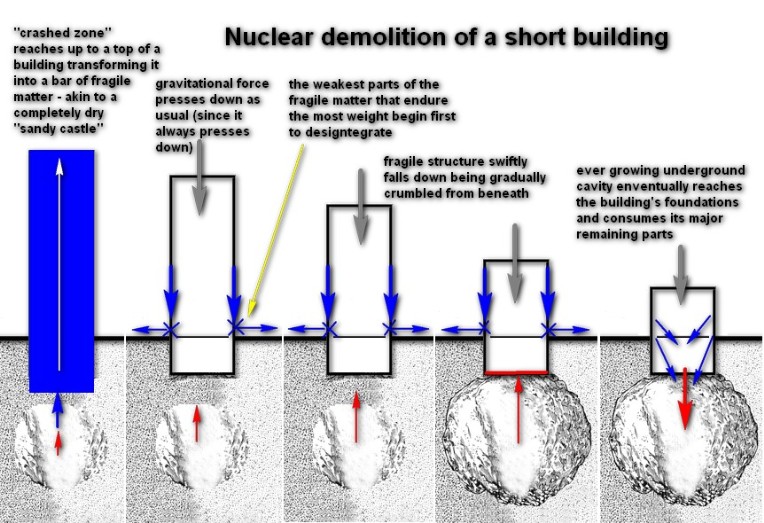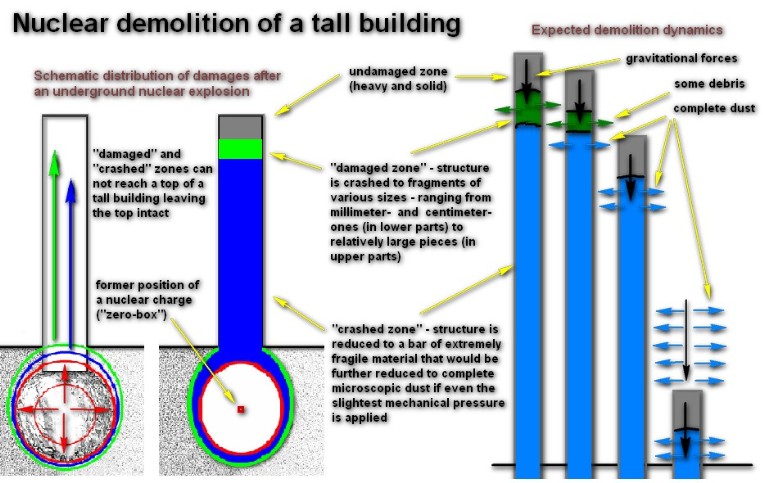Difference between revisions of "Nuclear demolition"
(Created page with "{{Info |This article is based on one by the same name that appeared on Wikipedia in March 2010 and was quickly removed. It is largely the work of Dimitri Khalezov. The heavil...") |
|||
| Line 110: | Line 110: | ||
==See Also== | ==See Also== | ||
*[https://wikispooks.com/wiki/File:Traces_of_Tritium_at_WTC.pdf Traces of Tritium at the WTC Complex] - American Chemical Society 1 October 2002. | *[https://wikispooks.com/wiki/File:Traces_of_Tritium_at_WTC.pdf Traces of Tritium at the WTC Complex] - American Chemical Society 1 October 2002. | ||
| − | *[https://wikispooks.com/wiki/File:Melt_Glasses_at_Underground_Test.pdf The Production and Dissolution of Nuclear Explosive Melt | + | *[https://wikispooks.com/wiki/File:Melt_Glasses_at_Underground_Test.pdf The Production and Dissolution of Nuclear Explosive Melt Glasses at Underground Test Sites in the Pacific Region] - IAEA 6 November 1998 |
| − | Glasses at Underground Test Sites in the Pacific Region] IAEA 6 November 1998 | + | *[https://wikispooks.com/wiki/File:Containment_of_Soviet_underground_nuclear_explosions.pdf The Containment of Soviet Underground Nuclear Explosions] - U.S. DEPARTMENT OF THE INTERIOR, GEOLOGICAL SURVEY, OPEN FILE REPORT 01-312 |
| − | *[https://wikispooks.com/wiki/File:Containment_of_Soviet_underground_nuclear_explosions.pdf The Containment of Soviet | ||
| − | Underground Nuclear Explosions] U.S. DEPARTMENT OF THE INTERIOR, GEOLOGICAL SURVEY, OPEN FILE REPORT 01-312 | ||
==References== | ==References== | ||
Revision as of 12:52, 23 October 2010
This article is based on one by the same name that appeared on Wikipedia in March 2010 and was quickly removed. It is largely the work of Dimitri Khalezov. The heavily Russian Language influenced grammar of the original is in process of being improved. As at 23 October 2010 this extends to Section 6 - Distributions of damaged and crashed zones and principles of a modern nuclear demolition only. There are also a few minor additions. The article needs general tidying up and additional references provided. |
Nuclear demolition of skyscrapers was a new concept of a broader term of controlled demolition that first appeared at the end of 60s, when it became necessary to provide some satisfactory means of how to demolish modern tall steel frame buildings in order to meet necessary requirements set by a building code.
Contents
- 1 Atomic demolition
- 2 Difference between atomic and nuclear demolitions
- 3 Properties of an atmospheric nuclear explosion
- 4 Properties of a deep underground nuclear explosion
- 5 “Damaged” and “crashed” zones
- 6 Distributions of damaged and crashed zones and principles of a modern nuclear demolition
- 7 Practical example of a nuclear demolition scheme
- 8 Nuclear demolition dynamics
- 9 Nuclear demolition of relatively short buildings
- 10 Nuclear demolition of tall buildings
- 11 See Also
- 12 References
Atomic demolition
Modern nuclear demolition - as a variety of controlled demolition - has little in common with so-called atomic demolition, which existed as far back as the 1950s. In an atomic demolition, special small or medium-caliber atomic demolition munitions (SADM or MADM) are used. The detonation of such munitions produce the classic atmospheric nuclear blast and a large part of the explosive energy is spent on creating the well-known atomic air-blast wave, thermal radiation, penetrating ionizing radiation, an Electromagnetic Pulse (EMP) and considerable radioactive contamination of the surroundings. Only a relatively small part of such an explosion is therefore useful for the intended job – ie the demolition of the target structure. The vast majority of the energy released will create unwanted devastation around the demolished object.
Judged from this point of view, atomic demolition has never been a viable option demolition works in ordinary civil engineering environments. Such demolition work is always performed using conventional explosives and steel cutter charges placed at key load-bearing points throughout the structure. The method provides a high 'explosive-efficiency factor' – meaning that a very high proportion of the available explosive energy is directed at the actual demolition, and very little on collateral damage to the surroundings.
Atomic demolition was therefore only an option in time of real emergency – for example, wartime - when time is at a premium and the necessary weeks of calculation and preparation time need for conventional controlled demolition is out of the question.
Apart from 'collateral damage' considerations, there is also a financial barrier to the routine use of atomic demolition in civil infrastructure environments. Any suitable atomic device would currently cost at least 2 million US dollars and a precisely wrought SADM or MADM probably much more. In other words simple cost renders their routine use prohibitive.
However, cost becomes less of an issue as the size of the demolition project increases. Were all other things about equal, it would clearly be preferable to spend say 10 million US dollars on a single thermo-nuclear demolition charge than say a few hundred millions of US dollars on manually disassembling an enormous half-kilometer tall steel structure that could take years.
Difference between atomic and nuclear demolitions
The main difference between the two is that an old atomic demolition munition (“mini-nuke”) produces an atmospheric nuclear explosion with all the unacceptable collateral damage described above. The modern 'nuclear' approach employs a much larger thermo-nuclear charge buried deep underground, producing a typical deep underground explosion with very different physical properties.
Properties of an atmospheric nuclear explosion
About 99% of entire initial energy release of any nuclear explosion is in a form of X-rays. The remaining 1% is divided between gamma-rays, visible spectrum rays (that cause the initial blinding white flash known as a “nuclear flash”), neutrons, alpha-, beta-, and some other elementary particles. The collective term for this energy release is “primary radiation”. So, in its initial stage, any and every nuclear blast produces nothing but primary radiation, which in turn consists of 99% X-rays.
In atmospheric conditions X-rays can not travel very far from a nuclear blast hypo-center, because they are quickly stopped and absorbed by air atoms. At maximum, X-rays can only travel tens of meters before complete absorption by surrounding air. That is why about 99% of the energy of an atomic blast is spent on heating surrounding air in only tens of meters around the hypo-center of the blast. This relatively small area becomes superheated and begins to radiate heat in the form of visible light similar to the Sun, but much more intense). This process is called "thermal radiation". This extremely overheated area represents a secondary effect of an atmospheric nuclear blast, traditionally called a “nuclear fireball”. This is a quite distinct and separate phenomenon from the initial “nuclear flash”, which is pure white in color and lasts for only a split of a second. The thermal radiation is orange-yellow in color and can last for several seconds. The two are the result of very different processes.
The first belongs to the “primary radiation” of a nuclear explosion and exists irrespective of physical environment of the detonation; the second belongs to the secondary effect of an atmospheric nuclear explosion – ie to its “nuclear fireball” which can only be created in atmospheric conditions. The same applies to the well-known air blast wave or “shock wave”. An air-blast wave is created by the same secondary effect of an atmospheric nuclear blast, the fireball. Nuclear fireballs expand in the atmosphere while energy is being passed from inner “hotter” zones to outer “colder” zones creating air movement towards periphery. At some point, the expanding front of highly compressed air detatches from the nuclear fireball border and travels on its own at supersonic speed – smashing everything in its path. This is how the air-blast wave actually occurs.
Properties of a deep underground nuclear explosion
Both of main the destructive factors commonly associated with nuclear explosions – the air-blast wave and thermal radiation – can exist exist only in atmospheric conditions. If a nuclear explosion occurs deep underground, there can be no “nuclear fireball” because of a total absence of surrounding air. Consequently, there can be no air-blast wave nor thermal radiation.
So what happens during an underground nuclear explosion?
Firstly, we must distinguish between deep and shallow underground. The broad brush distinction is between a detonation where the ground level surface is not broken and thus no crater is formed and one which breaks surface and forms a crater. While the physical properties of a deep underground nuclear explosion are distinctly different from an atmospheric one, the physical properties of a shallow sub-surface nuclear blast are mixed and comprise elements of both.
When a nuclear (or a thermo-nuclear) charge is detonated deep underground, its entire energy is released in the form of '“primary radiation” – exactly as described above. This radiation is absorbed by the surrounding soil or rock. So, while in atmospheric conditions the entire energy release initially heats air in a radius of several tens of meters, in deep underground conditions it heats some surrounding earth and rock to both melting and evaporation points. Deep underground nuclear explosions produce cavities, the sizes of which directly depend on two primary factors:
- actual yield of a nuclear explosion; and
- density of surrounding materials.
For example, a one kiloton detonation could evaporate/melt the following quantities (in tons) of various materials:
| Rock type | Specific mass of vaporized material (in tons per kiloton yield) |
Specific mass of the melted material (in tons per kiloton yield) |
|---|---|---|
| Dry granite | 69 | 300 (±100) |
| Moist tuff (18-20% of water) | 72 | 500 (± 150) |
| Dry tuff | 73 | 200 - 300 |
| Alluvium | 107 | 650 (±50) |
| Rock salt | 150 | 800 |
A 150 kiloton thermo-nuclear charge detonated sufficiently deep in granite rock will create a cavity of roughly 100 meters in diameter
“Damaged” and “crashed” zones
There are two distinctly different phases in the creation of a cavity during a deep underground nuclear explosion. It is important to understand them to grasp the mechanism of a modern nuclear demolition:
- Phase 1 - A cavity is created and it reaches its final “primary size”. This happens when the entire energy of the detonation has been absorbed by surrounding rock and the maximum possible quantity of rock has evaporated. So, a cavity of a “primary size” results exclusively from the vapourisation of earth and rock rock.
- Phase 2 - The enormous gaseous pressure of the "primary size cavity" expands it further in all directions and it expands from its final “primary size” to its final “secondary size”. It shall be understood that while “primary size” of the cavity results exclusively from disappearance of evaporated rock, it is not so when it comes to its “secondary size”. This phase 2 expansion occurs at the expense of neighboring areas of rock which are still solid resulting further tight compression
The diagram illustrates the processes involved.
The expansion of cavity from its “primary size” to its “secondary size” produces at least two zones of extreme disintegration of the surrounding physical structure. The one immediately adjacent to the cavity is called the “crashed zone”; the next is called the “damaged zone”. Everything within the “crashed zone” is completely “pulverized” – i.e. reduced to a unique sort of 'petrified' state that is found nowhere else in nature. This physical material state is absolutely unique with no real parallels in any known process other than a deep underground nuclear detonation.
In practical terms a physical structure within a nuclear "Crashed Zone" appears to remain “intact”, retaining its former shape and color. But in reality its internal structure has been transformed to a sort of petrified and extremely fragile state such that the slightest further mechanical jarring can cause it to disintegrate to a microscopic dust. This metamorphosis occurs to any solid material within such a nuclear “crashed zone” – steel, stone, wood, glass, organic materials of any kind, - all will be similarly petrified and transformed. They will retain their shape and color for a while, but reduce to microscopic dust under the slightest mechanical pressure. Typically, the size of such particles is in the order of 100 microns - corresponding approximately to the thickness of an average human hair.
The zone beyond the “crashed zone” is called the “damaged zone”. Material in the "Damaged zone" is also pulverized, but to a lesser and decreasing extent with distance from the hypocentre. Debris will range in size from millimeters to centimeters and much larger pieces and fragments in its outer areas.
Distributions of damaged and crashed zones and principles of a modern nuclear demolition
In the above diagram all three zones – an actual cavity in the middle, a “crashed zone” and a “damaged zone” are shown as being ideally round and concentric. However, this would apply only when a detonation occurs “ideally” deep in a uniformly dense medium – for a 150 kiloton yield detonated in granite rock the depth needs to be at least a half-kilometer. In such a case, resistance of surrounding rock would be equal from every direction and the cross-section form of the cavity and zones would be circular. For a shallower detonation (but not sufficiently shallow to qualify as "Shallow sub-surface") the picture will be slightly different. The material above would offer less resistance than that from the sides and below and the primary cavity will expand most towards the area of least resistance. The major part of the expansion will thus be directed upwards and cavity and zones will not be ideally spherical. They will rather be elliptical in cross section – comparable in shape to an egg with its sharper end facing upwards.
The upper areas of such “crashed” and “damaged” zones play the major part in an actual nuclear demolition.
Practical example of a nuclear demolition scheme
Let’s consider a practical nuclear demolition scheme of a skyscraper built on granite rock that has its lowest underground foundations at -27 meters (i.e. 27 meters below the Earth surface). This scheme will look like this:
First of all, it shall be understood that we can not use a thermo-nuclear demolition charge with a yield exceeding 150 kiloton, because 150 kiloton is a legal threshold set by the “Peaceful Nuclear Explosions Treaty of 1976”. So, we have to take it into consideration – irrespectively of whether a 150 kiloton charge is enough to pulverize the entire structure we want to demolish or not enough, we can not exceed the 150 kiloton limit. So, this is the maximum we are allowed to use. We know that a 150 kiloton deep underground nuclear explosion creates a cavity of final “secondary” size of roughly ~100 meters in diameter (50 meters radius) if it is detonated in granite. We can not position our nuclear charge in such a manner that an upper end of the cavity produced by it would reach the Earth surface, because we do not want to cause a severe radioactive contamination of surroundings. All what we want – it to demolish the structure above. So, we have to calculate a position of our demolition charge very precisely – counting that the upper end of the cavity should only reach the deepest underground foundations of our skyscraper, and not any higher than that. Considering that the lowest underground foundations in our case are 27 meters deep, with a radius of the expected cavity to be 50 meters, we have to position our “zero-box” at a point that is 50 meters deeper than the lowest underground foundations, or 77 meters below the Earth surface (see a picture above). In such a case we will have also an additional advantage: the building above will not only be subjected to pulverization alone; it will additionally immerse into an extremely overheated underground cavity and melt there, so its major part will disappear, saving a lot of our future efforts to remove its debris. Besides of this, melted parts of the demolished building will provide a kind of a “seal” or a natural “Sarcophagus” that will partly prevent radioactive materials from being emitted from the underground cavity, so preserving surroundings from radioactive contamination.
Nuclear demolition dynamics
Now let’s consider demolition dynamics based on the above-mentioned nuclear demolition scheme. Considering that in our case a demolition charge is not positioned “ideally deep”, forms of a cavity, a “crashed” zone and a “damaged” zone produced by it will not be “ideally round” either. They will all be extended upwards, so their horizontal radius's will be significantly decreased compare to the above-mentioned “round” forms. What will happen could be easily understood from this drawing:
Once a cavity in the middle of a process will begin to expand itself from its “primary” size to its “secondary” size, it will automatically produce “crashed” (inner) and “damaged” (outer) zones that will also expand together with the expansion of the cavity. Before the lowest Tower’s foundations could be reached by an upper end of the cavity, they would be reached one-by-one first by a border of the expanding “damaged zone”, and then – by a border of the expanding “crashed zone”. Both of them – the “damaged zone” first, and the “crashed zone” next – will continue to propagate upwards by our building structure and eventually they will reach quite far. It happens because the half-empty building structure offers much less resistance (in a sense of resistance of materials) than solid granite rock around the cavity, so, understandably, pressure wave would go by the way of least resistance – which is the way upwards. The “damaged zone” in our case which is an “outer layer” might likely reach up to 350 meters or so, while the “crashed zone” which is an “inner layer” might likely reach up to 300 meters – thus completely pulverizing at least 300 meters of our structure. This is the main goal of a modern nuclear demolition idea.
Nuclear demolition of relatively short buildings
As you can see from the above drawing, we will encounter absolutely no problem when we demolish a skyscraper, which is lower than 300 meters. Because its entire height will fit into a “crashed zone” alone. So, irrespectively of the actual building’s construction and strength, it will be reduced to complete dust. But at first it will not be “pulverized” in full sense of this word. It would rather resemble a completely dried “sandy castle” that supposes to disintegrate under its own weight. Please, see a drawing below that shows how such a short building will occur in its entirety within a “crashed zone” (shown by blue). For probably a couple of seconds it will still look “normal” as if nothing happens with it. But soon it will collapse, because the most gravitational pressure will be applied to its lower parts, which will begin to crash into dust and soon the building will neatly descend onto its footprint, creating an impression that it is being demolished by some continuous process from beneath. An actual underground cavity that by that time supposes to reach the lowest underground foundations of the building is expected to contribute to this process – this extremely overheated cavity will consume a larger part of the descending building, melting it in the process. All what supposes to eventually remain from such a building – is a relatively small pile of debris represented by the lowest parts of the building’s perimeter that might likely be saved by a pulverization process (but it might depend on the actual building’s construction – these lowest parts of the perimeter might escape pulverization only in case of the underground footprint of the building is narrower than its above-ground footprint).
In the above sample we could simply neglect “damaged” and “undamaged” zones, because in case of a short building they don’t have any significance.
Nuclear demolition of tall buildings
However, it will not be so easy to demolish a building if its height exceeds 300 meters. As you can see from the above drawing that shows a complete distribution of damages along a toll building, a “crashed zone” might not reach up to its top. In result we might have a heavy undamaged top of the building, with a relatively narrow “damaged zone” beneath it (which could be a source of various debris – ranging from millimeter- and centimeter-sized to relatively big fragments), and with a “crashed zone” further below – that might become a source of some fluffy dust if something would pressure its fragile structure from above. So, most likely what we will have after we set our nuclear demolition scheme in motion is that an undamaged building’s top that will lose its base and crash downwards along the pulverized structure, scattering first some debris, and later – only dust until it reaches the ground. Practically it might look like is shown on this drawing:
It seems that it is possible to completely pulverize even structures higher than 300 meters but in this case we apparently need to use some nuclear charge that is more powerful than 150 kiloton in TNT yield. However, as it was mentioned above, it is not legally allowed to exceed the 150 kiloton threshold set by the “ Peaceful Nuclear Explosions Treaty of 1976”. [1] That is why all current nuclear demolition schemes use thermo-nuclear charges of 150 kiloton and never more than this.
In any case, usage of such a standard thermo-nuclear demolition scheme as described above is justified even if it is used to demolish buildings higher than 300 meters, because to remove debris left by the building’s insufficient pulverization would still be more expedient than to manually disassemble such a huge structure.
See Also
- Traces of Tritium at the WTC Complex - American Chemical Society 1 October 2002.
- The Production and Dissolution of Nuclear Explosive Melt Glasses at Underground Test Sites in the Pacific Region - IAEA 6 November 1998
- The Containment of Soviet Underground Nuclear Explosions - U.S. DEPARTMENT OF THE INTERIOR, GEOLOGICAL SURVEY, OPEN FILE REPORT 01-312
References
- ↑ The Peaceful Nuclear Explosions Treaty - Wikipedia page
